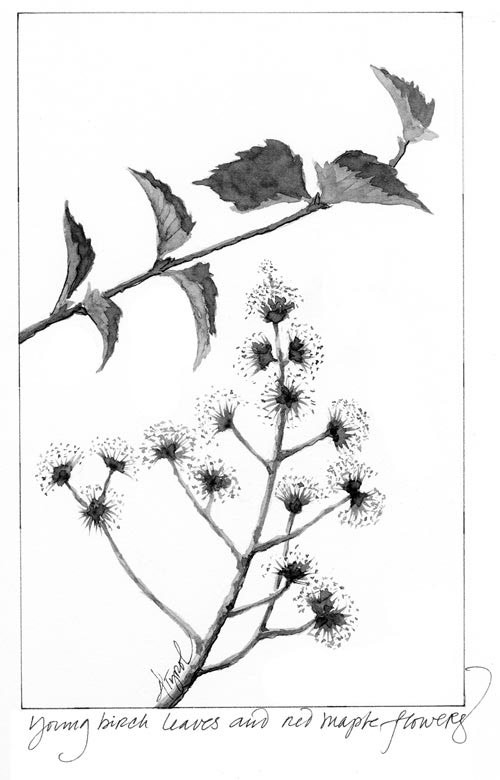
One of my hobbies this time of year is to try to pinpoint the day that I can say that the leaves are out and spring has arrived. Usually it’s sometime in the second week of May, though it seems to have been inching forward over the past couple of decades. But even when I can declare that it’s “spring,” not every tree is clothed in green.
Ash trees, for instance, will still have bare branches weeks from now, and the northern catalpa in my yard will balk at putting out its saucer-sized leaves for another month. Why? The question has gnawed at me and, I’ve learned, bedeviled scientists for decades.
The answer has to do with genetics and evolution, climate and weather.
You may have noticed that all the sugar maples, say, don’t leaf out at once. That could be due to microclimate. Those on a sunny south-facing slope are likely to leaf out earlier than ones growing in a low area with cold soil or on the north side of a hill. Of course, it could also have to do with genetics. All sugar maples are not exactly alike, any more than all humans are.
It might seem logical that a tree that leafs out earlier would have an edge in the race for sunlight. But there is a “safety versus efficiency” tradeoff there, said Kevin Smith, a plant physiologist at the U.S. Forest Service’s Northern Research Station who studies patterns of tree growth and how trees use resources.
“Those that leaf out early might get a head start, but they’re also running a risk of injury, of having to put out a second flush of leaves if they get zapped by a late spring frost,” said Smith.
Different species of trees make different choices, just as different people might. “Those are different parts of their genetic programs, and it’s not always possible to say what the survival benefit is,” Smith said.
A lot of a tree’s leaf-out strategy has to do with how the tree’s water-carrying vessels are arranged. Oaks – and elms, chestnuts and ashes – are so-called “ring porous” species. Their water-carrying vessels are arranged in a circle in a particular part of the growth ring. Their vessels are bigger and can carry more water, but are easily damaged by freezing temperatures. The tree has to put a lot of stored energy into re-creating them before it can start making leaves that will then collect more energy, Smith told me.
Diffuse porous species – those where the water-carrying vessels are narrower and scattered throughout the growth wood – are not as susceptible to cold damage. Some of those, like aspens, birches, willows, and maples, tend to leaf out earlier, though other diffuse-porous species, like basswoods, tupelos, sweet gums and beeches, tend to leaf out later. This delay may have nothing to do with tree function. In a 1984 paper in the American Naturalist, McGill University biology professor Martin J. Lechowicz speculates that late-leafing diffuse-porous species simply evolved in warmer climates, while the early-leafing species evolved in colder climates.
In fact, Lechowicz concludes that you can’t assume any of the species in temperate forests are perfectly adapted to today’s climate. Glaciers, and trees, have surged back and forth across the landscape for hundreds of thousands of years. That means, Lechowicz said, that present forest communities can be seen only as “transient assemblages rather than stable sets of co-evolved species.” Sort of like random travelers forced to put down roots in Logan Airport on a bad weather day. Lechowicz told me in a recent email that recent research in paleoecology and the evolutionary ecology of the tree species he was writing about “is consistent with the ideas I was raising.”
In the end, a staggered leaf-out schedule might be a good thing, said the Northern Research Station’s Kevin Smith. “The variation may help in creating a healthy, resilient forest; it may be a benefit to the forest as a whole that not everybody do everything at the same time.” Synchronized leaf-out, for instance, could lead to a synchronized pest population explosion.
Climate change has brought a renewed emphasis on research into why trees do what they do when they do it. And there’s still a lot to be learned, said Smith. The timing of leaf-out, wood production, the development of sugar-transporting tissues, “we really don’t understand how all that is connected.”


Discussion *